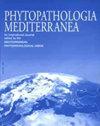Starch-glyceryl monostearate edible coatings formulated with sodium benzoate control postharvest citrus diseases caused by Penicillium digitatum and Penicillium italicum
IF 1.9
3区 农林科学
Q2 AGRONOMY
引用次数: 4
Abstract
The curative antifungal activity of edible composite coatings (ECs) based on pregelatinized potato starch-glyceryl monostearate (PPS-GMS) formulated with or without sodium benzoate (SB) to control green mould (caused by Penicillium digitatum) and blue mould (P. italicum) was assessed on ‘Orri’ mandarins, ‘Valencia’ oranges and ‘Fino’ lemons. These fruit were artificially inoculated with P. digitatum or P. italicum, treated by immersion in coating emulsions and compared to uncoated control fruit immersed in water and fruit immersed in 2% SB (w/v) aqueous solution. Treated fruit were then stored at either 20°C or commercial low temperature (5°C for mandarins and oranges, 12°C for lemons). Coatings without SB did not exhibit antifungal activity, whereas coatings containing 2% SB reduced incidence and severity of green and blue moulds, in comparison to the controls, on all citrus species and in all storage conditions, without differing from the aplication of 2% SB alone. For example, incidence reduction on ‘Fino’ lemons was from 99 to 0% after 7 d at 20°C, and from 99 to 30% after 2 weeks at 12°C. None of the treatments was phytotoxic. These results indicate that applications of SB as antifungal ingredient of PPS-GMS based ECs is a promising non-polluting alternative to control Penicillium postharvest decay of citrus, and these ECs are effective substitutes for conventional waxes amended with synthetic fungicides.用苯甲酸钠配制淀粉-单硬脂酸甘油食用涂料防治柑橘采后指状青霉和意大利青霉病
以预糊化马铃薯淀粉-单硬脂酸甘油酯(PPS-GMS)为基料,分别与苯甲酸钠(SB)和无苯甲酸钠配制可食用复合涂料(ECs),对“Orri”柑橘、“Valencia”橙子和“Fino”柠檬的绿霉(由指状青霉菌引起)和蓝霉(由意大利青霉引起)的疗效进行了评价。将这些果实人工接种digitatum或italicum,浸泡在包衣乳剂中,并与未包衣的对照果实浸泡在水中和浸泡在2% SB (w/v)水溶液中进行比较。处理后的水果在20°C或商业低温(柑橘和橙子5°C,柠檬12°C)下储存。不含SB的涂层没有表现出抗真菌活性,而与对照相比,含2% SB的涂层在所有柑橘品种和所有储存条件下都降低了绿霉和蓝霉的发病率和严重程度,与单独施用2% SB没有区别。例如,“Fino”柠檬在20°C条件下,7天后发病率从99%降低到0%,在12°C条件下,2周后发病率从99%降低到30%。没有一种治疗方法是植物毒性的。这些结果表明,SB作为PPS-GMS基ECs的抗真菌成分是一种很有前景的无污染替代品,可以有效地控制柑橘采后青霉菌的腐烂,并且这些ECs是用合成杀菌剂改性的传统蜡的有效替代品。
本文章由计算机程序翻译,如有差异,请以英文原文为准。
求助全文
约1分钟内获得全文
求助全文
来源期刊

Phytopathologia Mediterranea
生物-植物科学
CiteScore
4.40
自引率
8.30%
发文量
28
审稿时长
6-12 weeks
期刊介绍:
Phytopathologia Mediterranea is an international journal edited by the Mediterranean Phytopathological Union. The journal’s mission is the promotion of plant health for Mediterranean crops, climate and regions, safe food production, and the transfer of new knowledge on plant diseases and their sustainable management.
The journal deals with all areas of plant pathology, including etiology, epidemiology, disease control, biochemical and physiological aspects, and utilization of molecular technologies. All types of plant pathogens are covered, including fungi, oomycetes, nematodes, protozoa, bacteria, phytoplasmas, viruses, and viroids. The journal also gives a special attention to research on mycotoxins, biological and integrated management of plant diseases, and the use of natural substances in disease and weed control. The journal focuses on pathology of Mediterranean crops grown throughout the world.
The Editorial Board of Phytopathologia Mediterranea has recently been reorganised, under two Editors-in-Chief and with an increased number of editors.
 求助内容:
求助内容: 应助结果提醒方式:
应助结果提醒方式:


